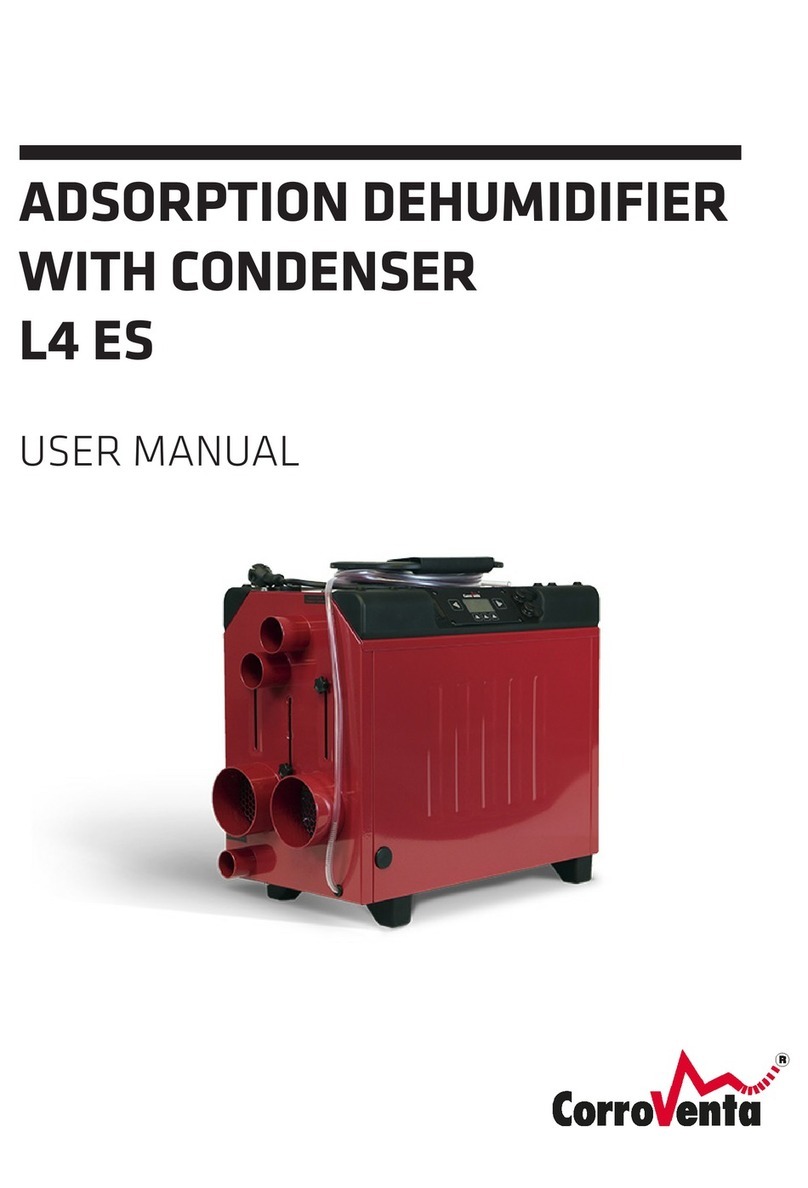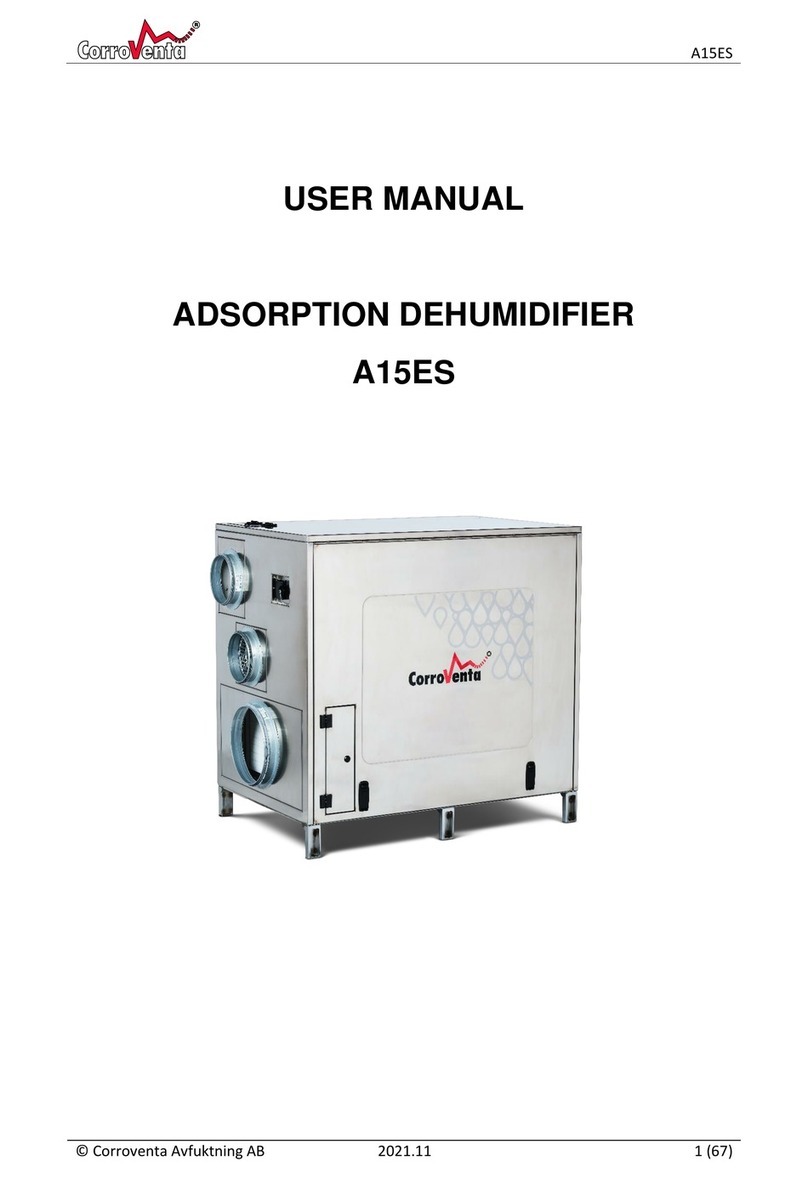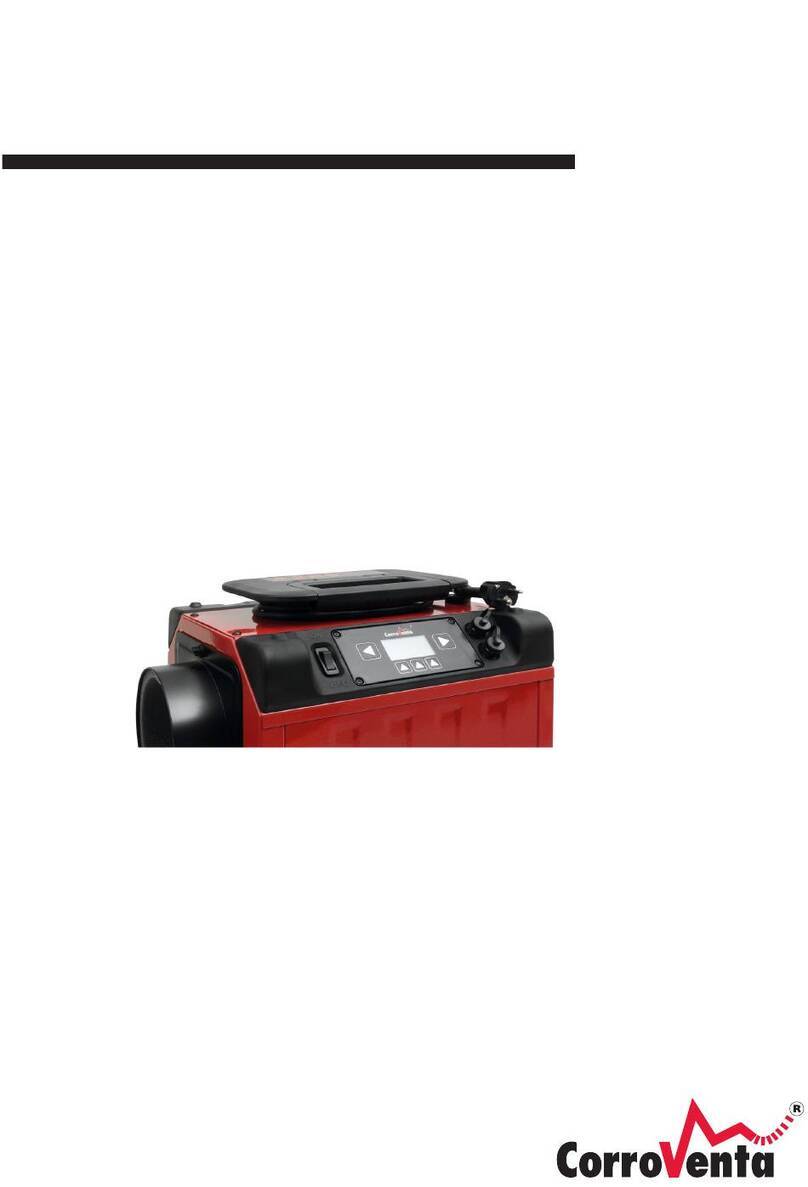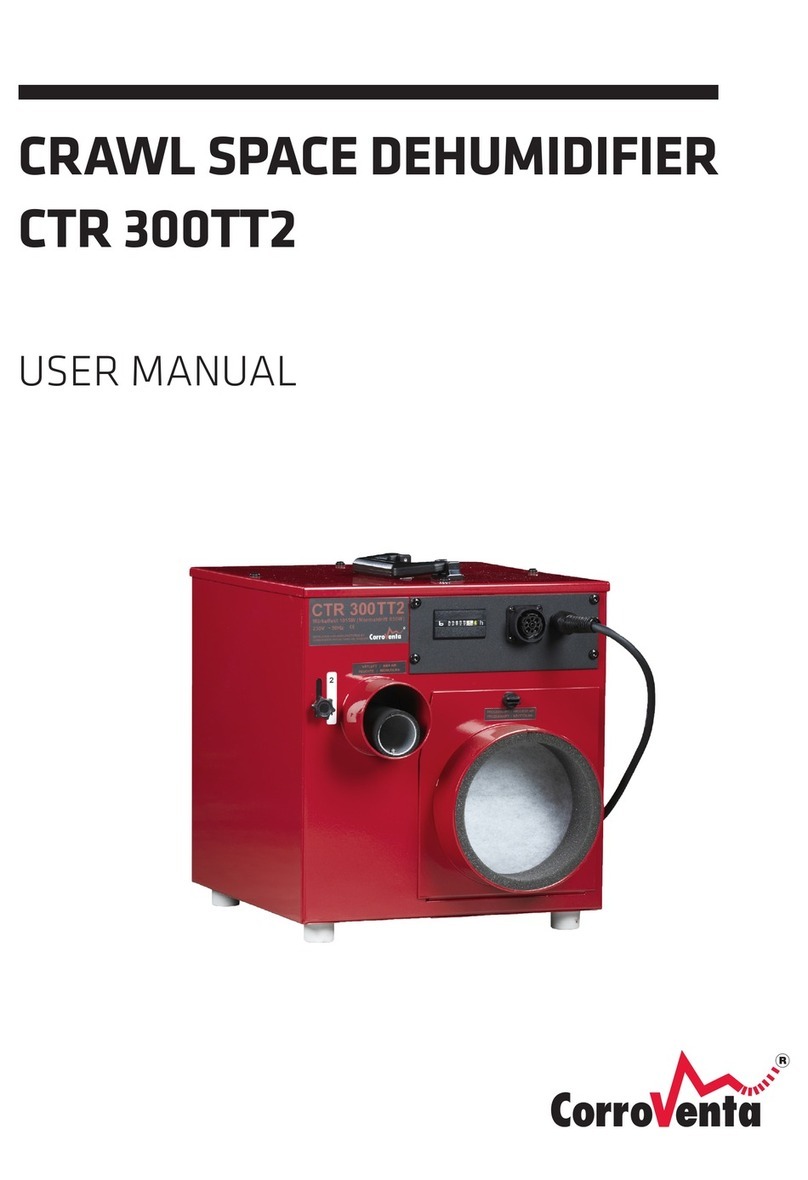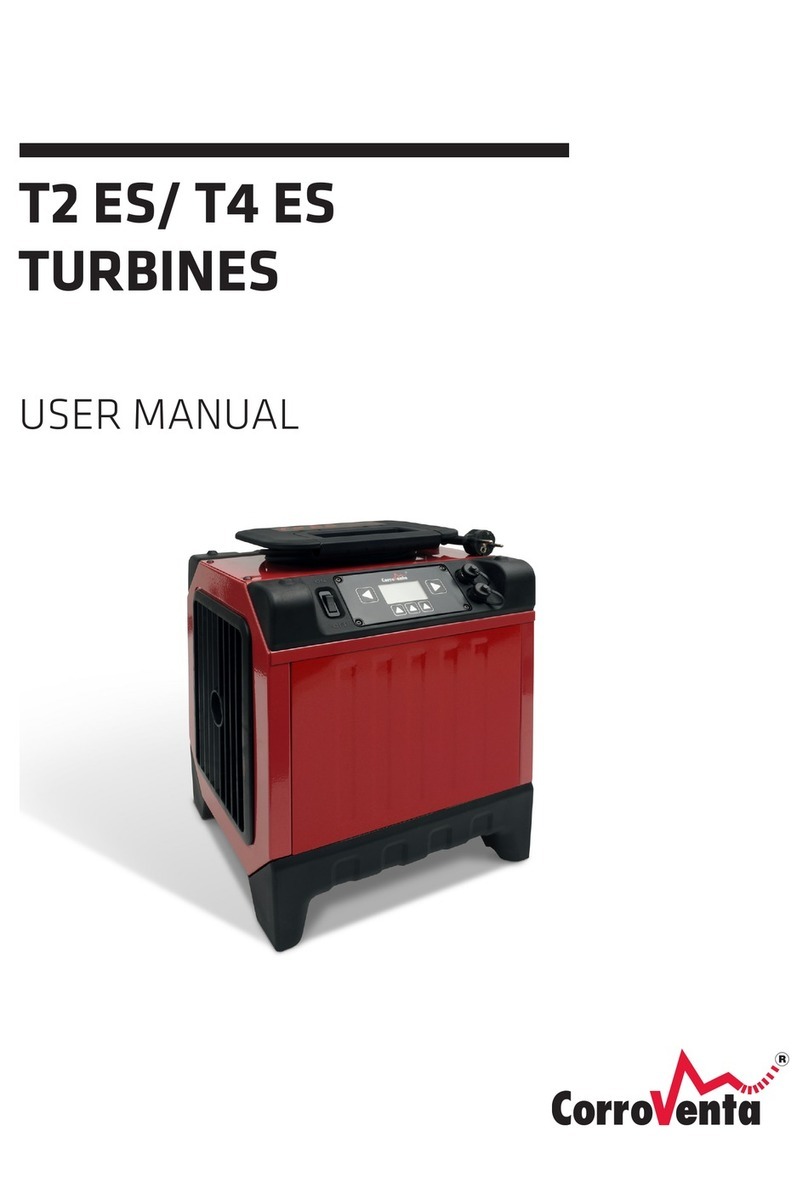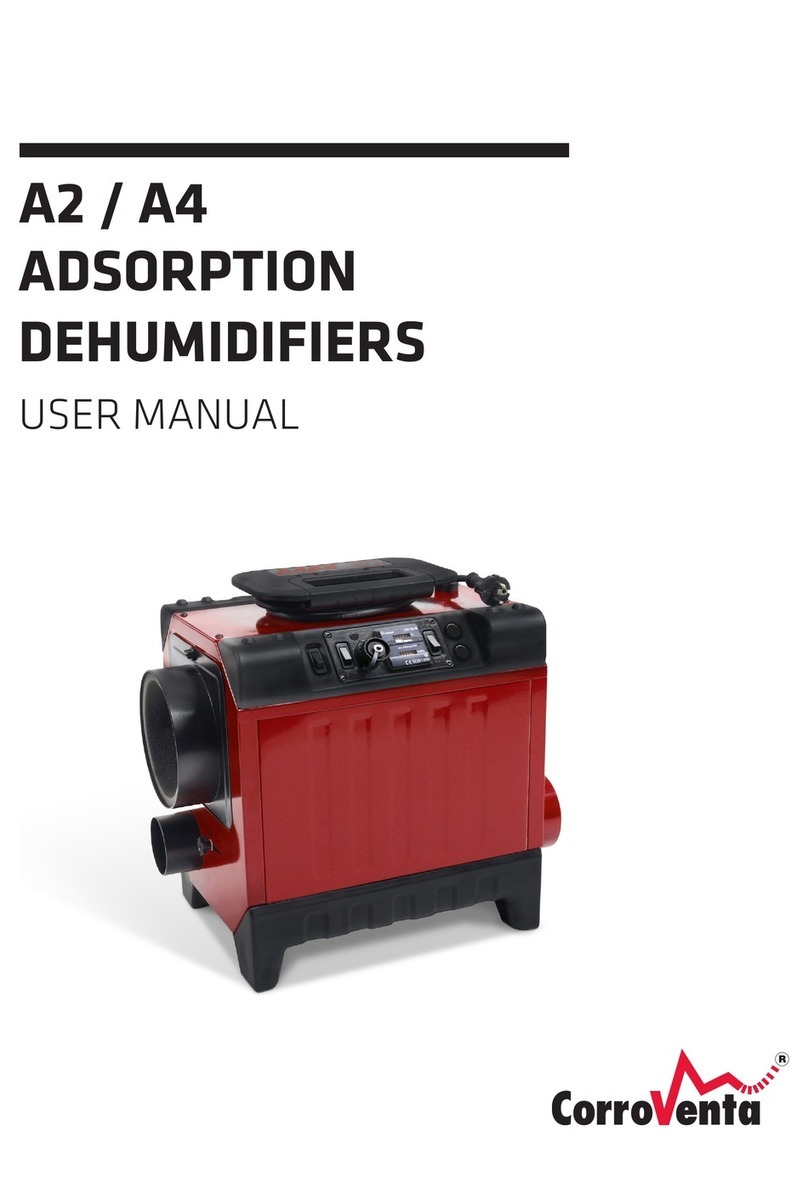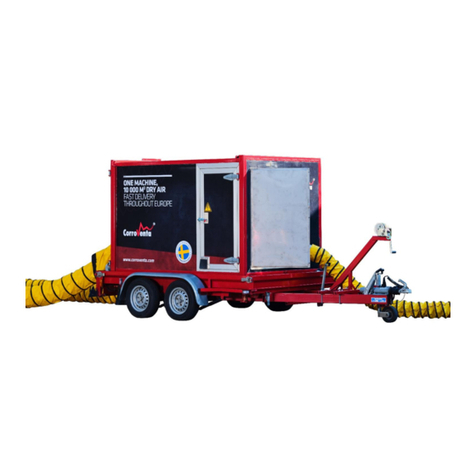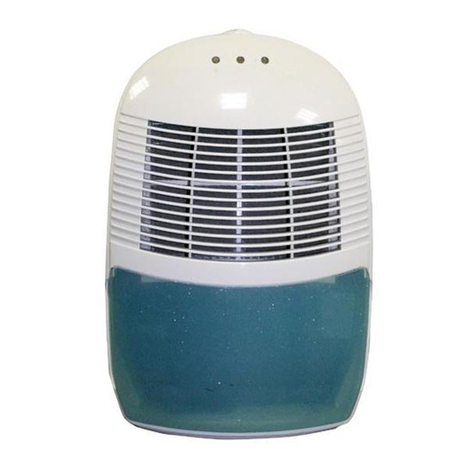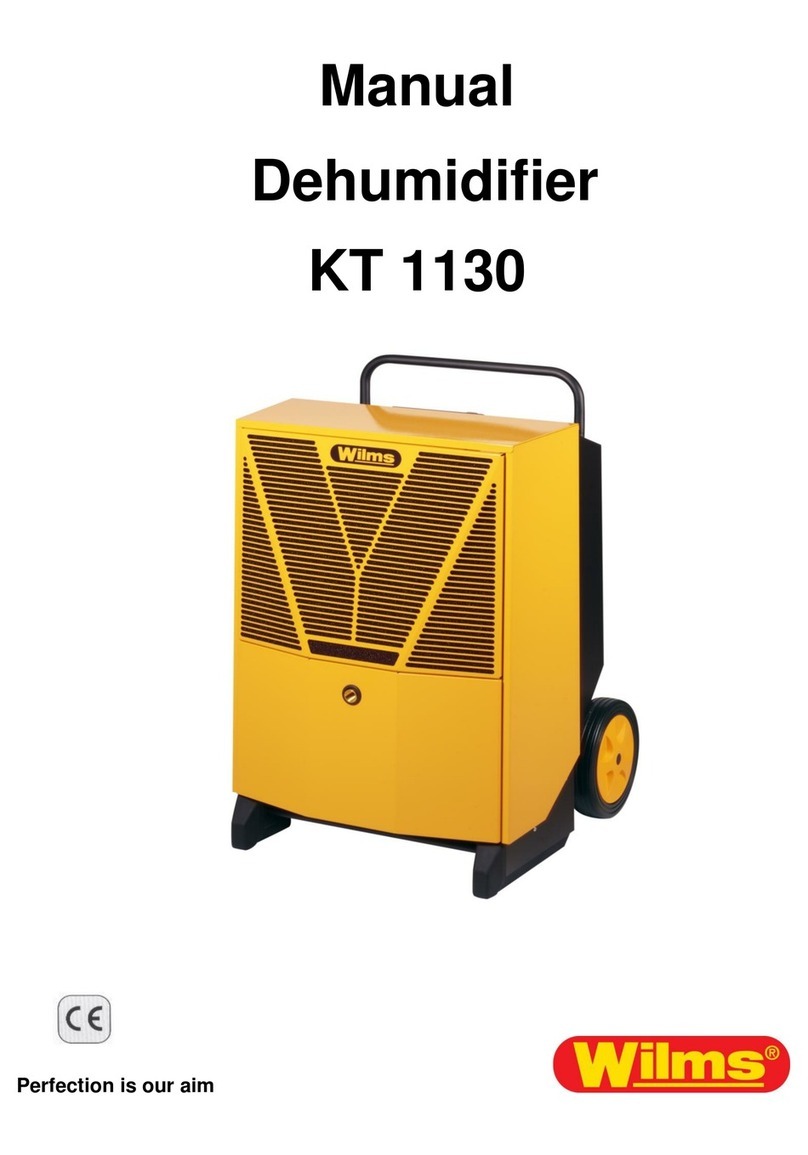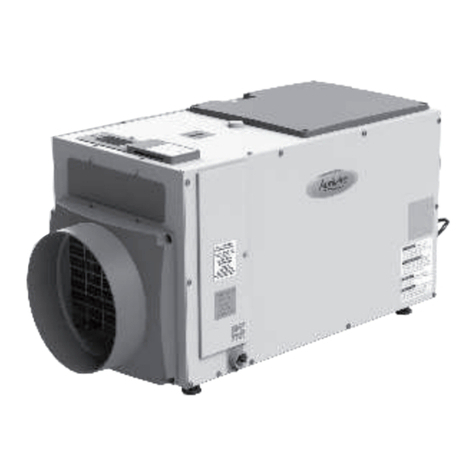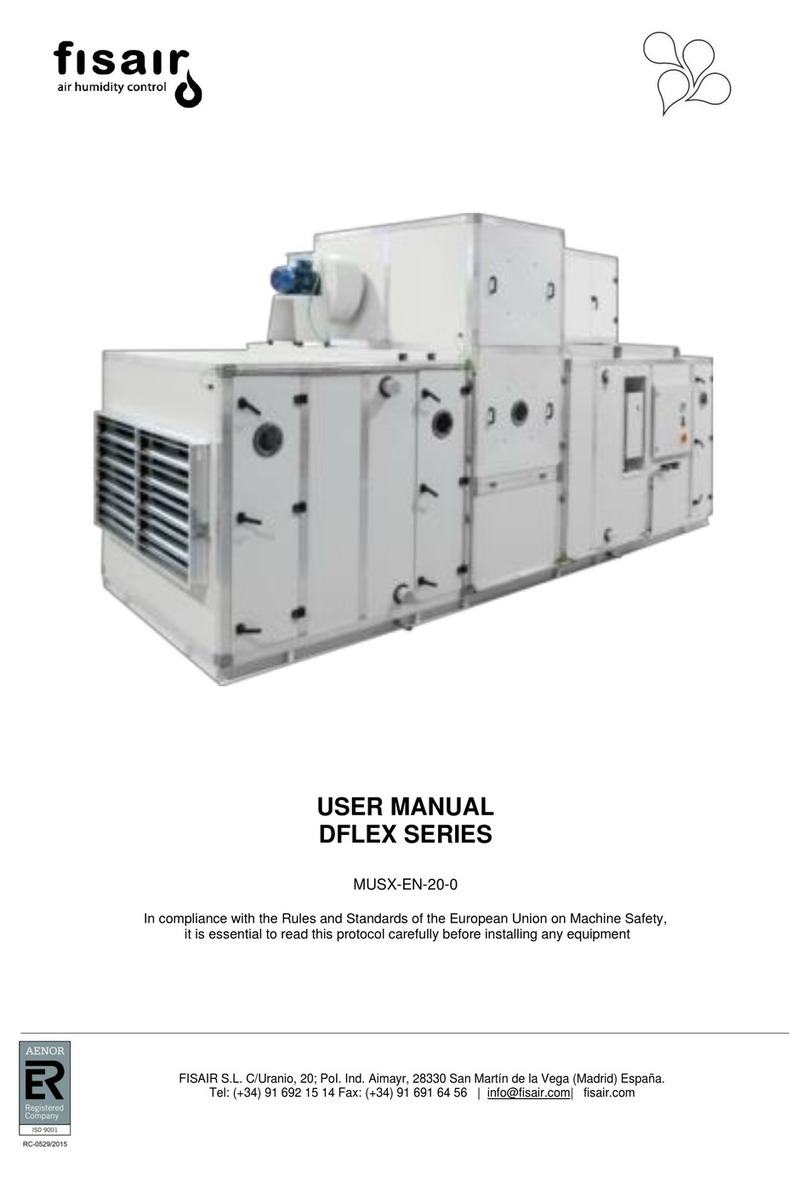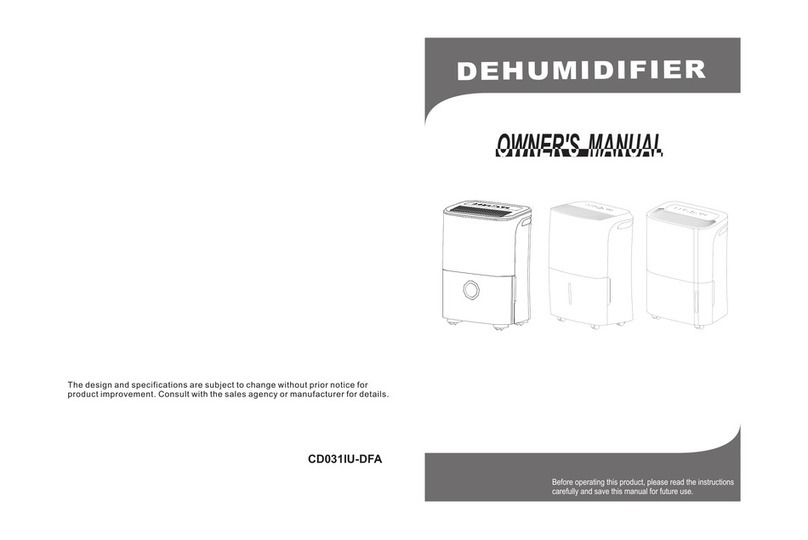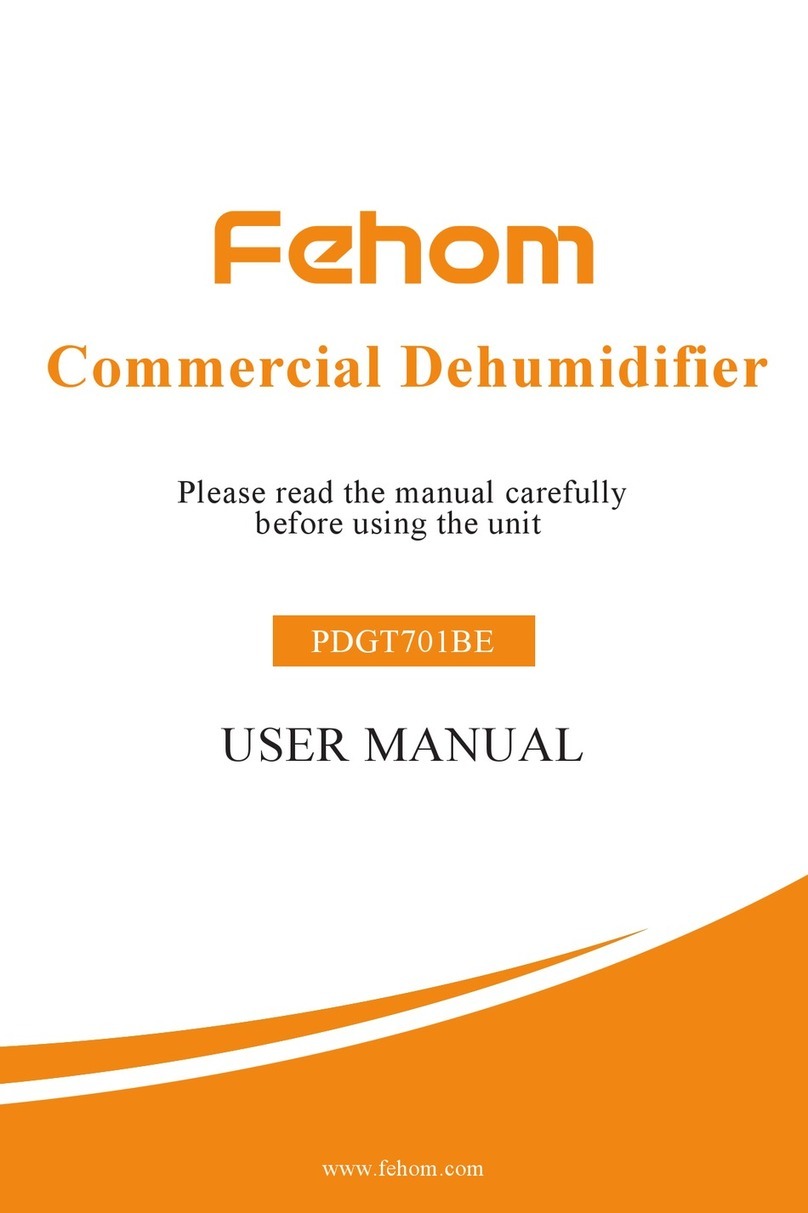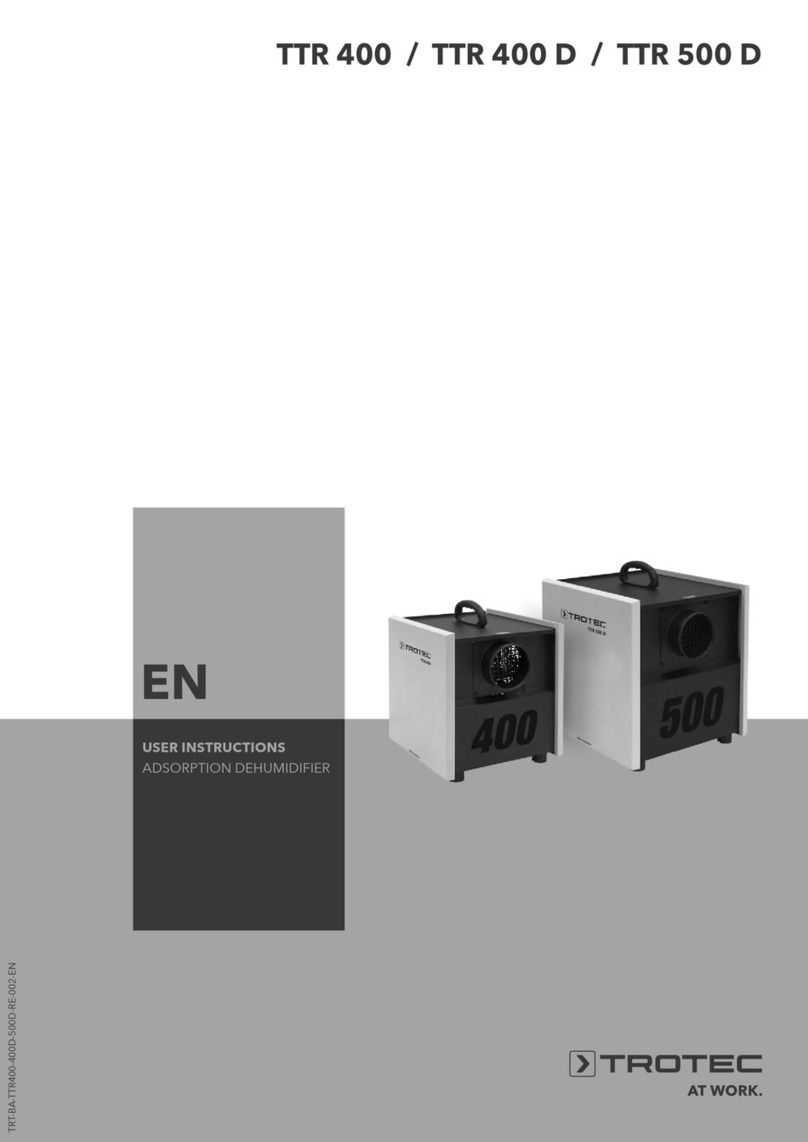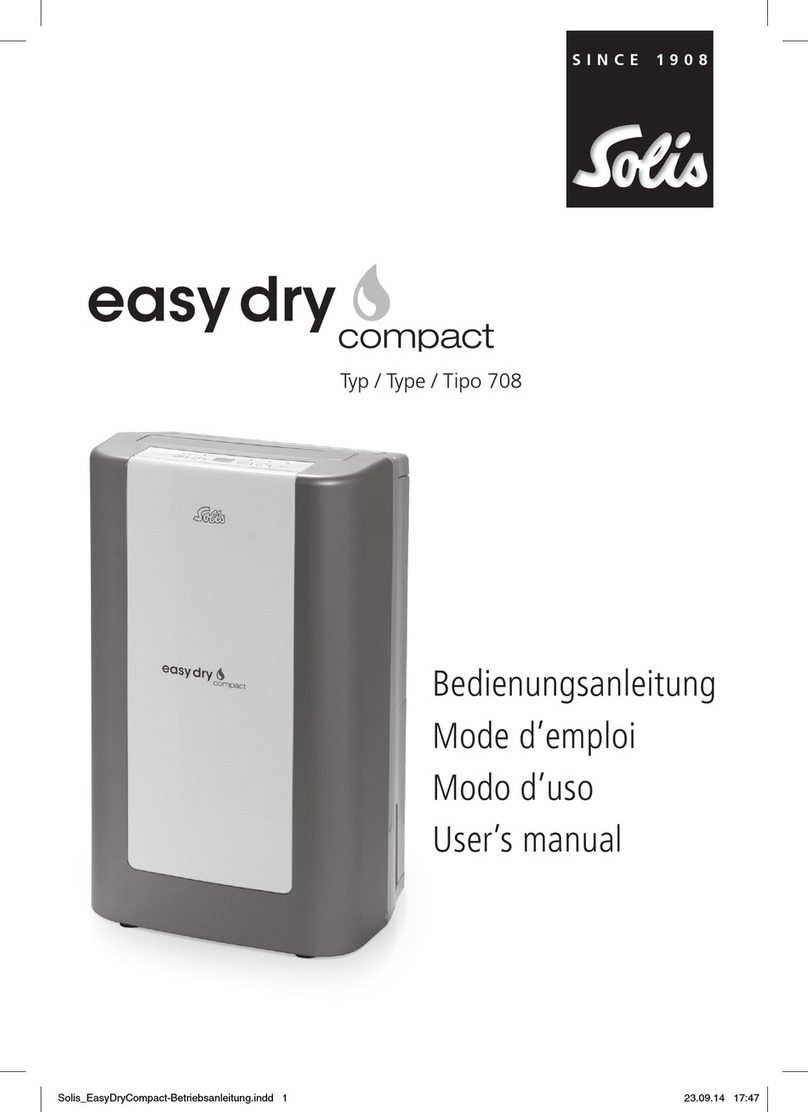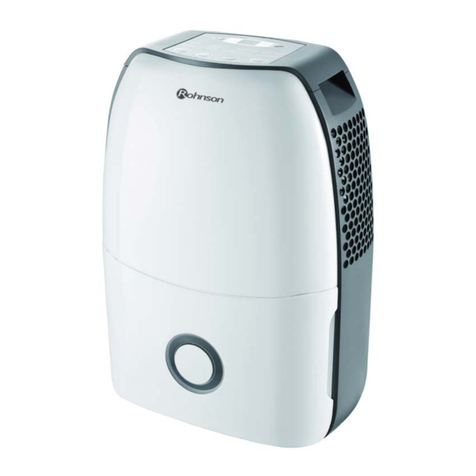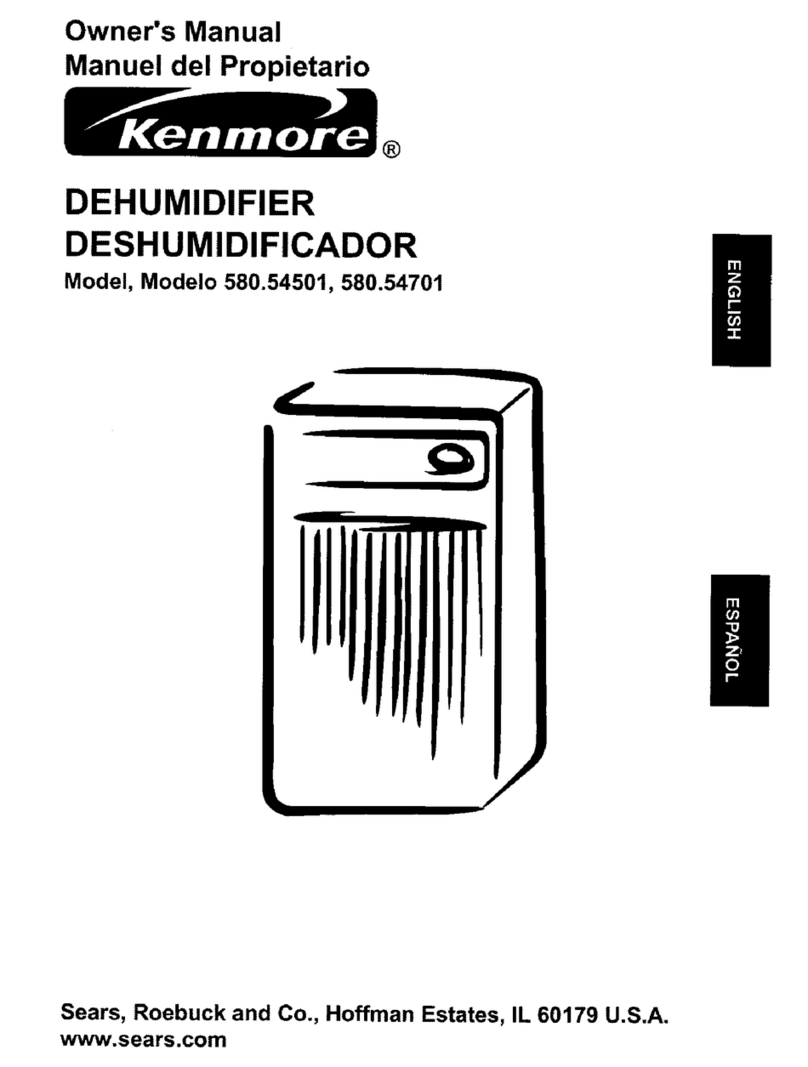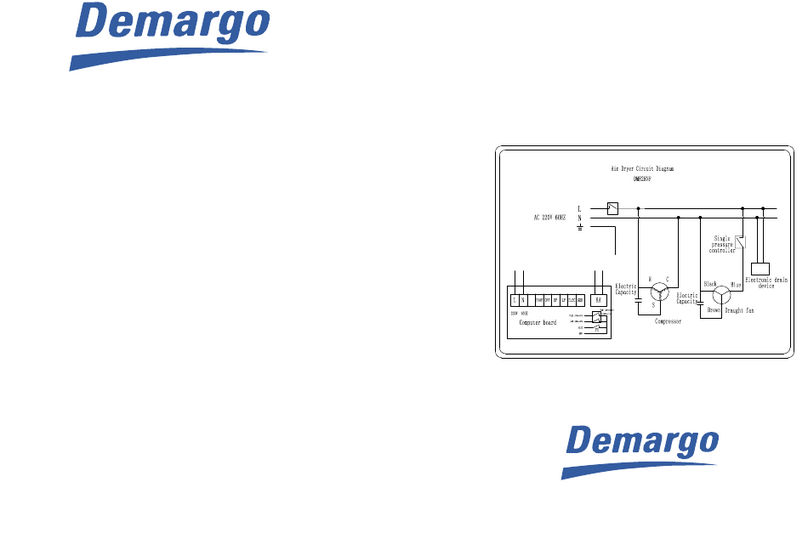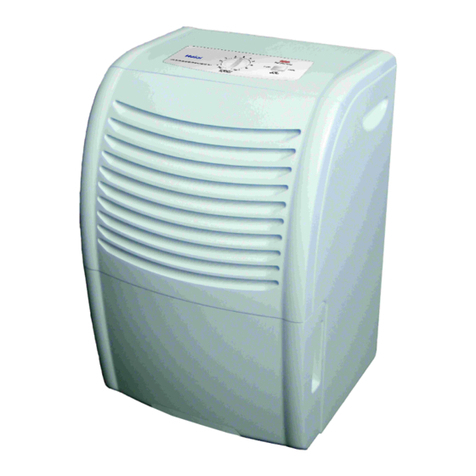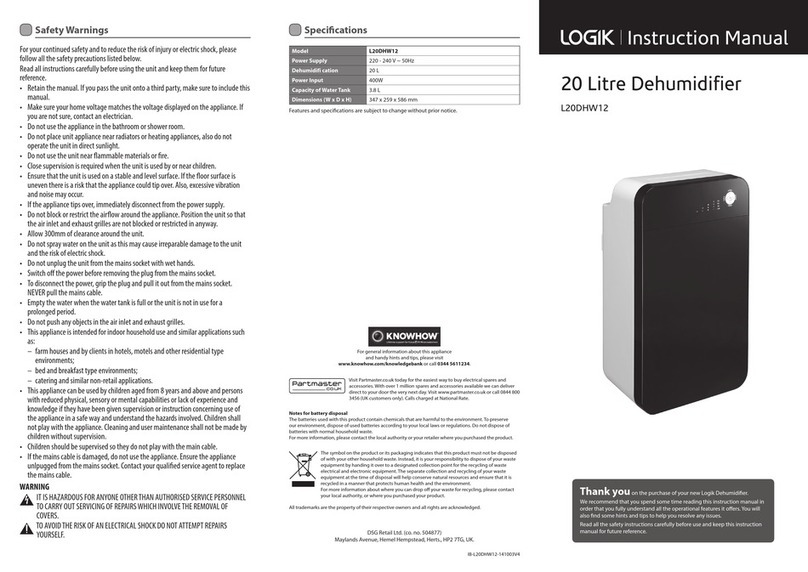
© Corroventa Avfuktning AB
Safety information
This device is not intended for use by persons with reduced physical, mental or sensory impairments
nor other persons lacking the necessary skills or experience, unless supervised or instructed by
another person with responsibility for their safety.
Children may only use the device under the supervision of an adult to
ensure that the device is not used as a toy.
Electrical installations carried out in connection with the dehumidifier installation must be performed
by a professional in accordance with local and national regulations.
In addition, the following warnings and instructions must be read and followed:
1. The dehumidifier is only intended for indoor use.
2. The dehumidifier must not be powered on before installation is completed in accordance
with this manual.
3. The dehumidifier must not be covered because this may lead to overheating and fire.
4. The dehumidifier must not be used as a worktable, trestle or stool.
5. The dehumidifier is not intended to be stood or climbed on.
6. Never operate the dehumidifier without installing the filter as this may damage the
dehumidifier. Ensure that the filter is clean. If it is blocked, the machine may overheat.
7. Do not allow the dehumidifier to draw in alkaline chemicals or organic substances with a high
boiling point, such as oil, grease, solvents, boracol or similar. These can damage the rotor.
8. The dehumidifier may not be used in areas where it can produce explosive gases.
9. Do not insert objects into the intake or exhaust as this could damage the dehumidifier and
injure people.
10. Place the dehumidifier on a firm and flat surface so that it cannot overturn.
11. Keep children, animals and bystanders away from the workplace.
12. Contact the supplier if the dehumidifier is damaged or if the plug or the electrical cable are
damaged. Do not make any repairs yourself if you have not undergone the supplier's
training.
13. Do not damage the electrical cable. The cable must not run through water or over sharp
edges.
14. Never carry or drag the dehumidifier by the cable.
15. Using electrical equipment in very damp or wet conditions can be dangerous. Do not operate
the dehumidifier if it is standing in water.
16. The dehumidifier may only be connected to a grounded socket with voltage according to the
rating plate.
17. It is recommended to use an earth-fault breaker to minimise the risk of electric shock.
18. Water must not encounter the dehumidifier's electrical components. If it does, ensure that
they are dried thoroughly before the dehumidifier is used again.
19. Never open the dehumidifier for cleaning or service without first ensuring that the
dehumidifier is disconnected from power.
20. Repairs and maintenance of the dehumidifier's electrical system must be performed by a
qualified electrician.
21. Wet air hoses/pipes used and connected to the dehumidifier must be corrosion resistant and
able to withstand heat of 80°C.
22. The dehumidifier must not be used with accessories other than those described in this
manual or approved by Corroventa Avfuktning AB.
Contact the supplier of this dehumidifier for further advice on the safety and use of the product.
